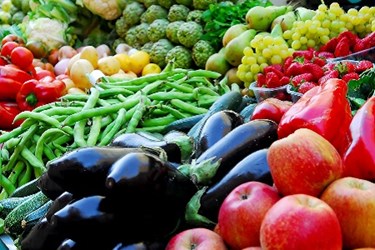5 Tips For A Flourishing Food Supply Chain

By Sam Lewis

Logistics managers in food supply chains are feeling more pressure than ever to get high-quality products on retailers’ shelves quickly, without losing margins. They must do all of this while keeping consumers safe. Given the complexity of food safety challenges in the industry, the issue of safe
The food supply chain continues to grow with no end in sight. With that growth comes pressure on members of the supply chain to get perishable foods to market quickly and safely. So, how can logistics professionals get products to shelves without spoilage, contamination, or flat-out loss? What steps need to be taken to ensure quality, freshness, and safety while controlling costs? When optimizing you company’s food and beverage supply chain, consider these five keys:
- Keep Perishables At Sustained Temperatures: This step is crucial to food safety. Supply chain mangers should be monitoring temperatures at every step across the supply chain — supplier, packager, distributor, retailer, and all phases of transit. Continuously managing products means greater oversight and less risk to damaged, spoiled, or contaminated products.
- Closely Supervise Product Transport: As just mentioned, proper temperatures are essential for food safety. But if products are not delivered on time, they may as well be lost spoiled, or contaminated. Retailers want products on shelves during peak freshness periods, not on a delivery truck. Ensuring on-time delivery is another way to ensure freshness, as well as safety.
- Keep A Close Eye On Packaging: how well perishable foods are packaged can be directly linked to well they can be shipped. Fresh foods should be packaged in such a way that exposure to transport conditions, along with the number of “touches” they receive, are minimized. Third-party logistics (3PL) companies can help determine the best way for your company’s perishables to be packaged in order to arrive at their final destination in prime condition. 3PLs can also determine and manage the efficiency of different packaging types and offer alternatives to prevent contamination, spoilage, and loss.
- Control Costs By Eliminating Waste: Growing conditions, fuel prices, commodity costs, and a slew of other variables can affect costs. Optimizing your company’s supply chain to eliminate waste is one of the best ways to manage costs, improve profits, and increase your competitive edge. Some of these cost-saving methods include integrated transportation, along with new warehousing solutions and forecasting methods to get products to retailers more quickly
- Abide By Federal Regulations: FSMA’s upcoming implementation aims to keep unsafe food out of consumers’ hands through a proactive, rather than reactive, approach. Under FSMA, shippers will be required to use temperature-controlled trucks equipped with on-board thermometers to ensure perishables maintain proper temperature levels from leaving production facilities all the way until they are delivered to grocers. FSMA will also make food transporters subject to more inspections, new recordkeeping practices, and facility tests than ever before.
